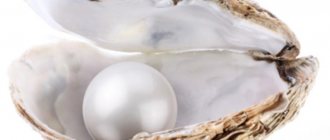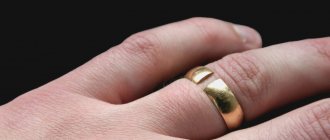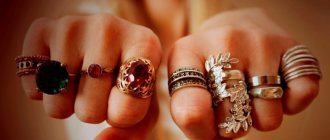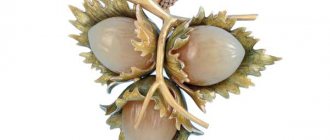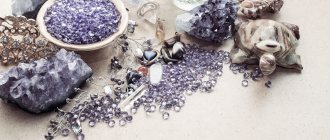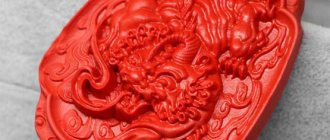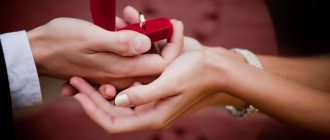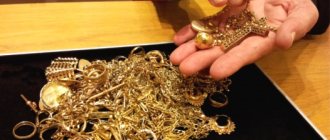Everyone has known for a very long time that diamonds are a girl’s best friend. A diamond ring on a woman’s hand is not only evidence of her wealth. Jewelry with this most expensive stone in the world is passed down from generation to generation. And, even if they are not a museum value, they are valued in the family.
Today, the price of a diamond ring may seem unaffordable to many. But, as it turns out, you can give your woman such a ring and not go broke. It all depends on what kind of stone is inserted into an expensive gold frame.
It turns out you can buy a diamond ring at an average price. And here it is important to clearly understand that you are buying a natural diamond and not a fake. How to choose correctly and not fall into the clutches of scammers?
Important! You should buy diamond rings only in reliable, trusted places, stores that have a high reputation as an honest seller.
But if you continue to be tormented by vague doubts, you can check which stone is inserted into the ring.
Life hacks or how to check if a ring is a real diamond
- Diamonds weighing more than 0.3 carats are certified in a gemological laboratory. In the case of selling a diamond in jewelry, a certificate can be issued not only for the stone itself, but also for a diamond ring, as well as other jewelry.
Having the certificate number, you can easily check it by going to the website of the laboratory that issued it. The certificate number is also printed on the bottom of the stone itself. This number cannot be changed without damaging the diamond.
The largest and most famous laboratory today is the American GIA laboratory. But certificates issued in India are of much less value.
- Did you know that only a diamond will not be visible under X-rays?
Yes, of course, none of us will bother to have the stone shined before purchasing. But you can always check it this way. The rays will pass through the stone and the picture will be empty. No other material gives such a picture.
- Distinguish a diamond from glass or crystal.
Breathe on it. If the stone does not fog up, then it is a diamond.
- The targeted beam is not visible on the bottom or back of the stone.
This simple experiment can be carried out with a laser pointer or using a smartphone flashlight. The beam is refracted and does not pass through the stone to its reverse side.
- Weight to size ratio.
There is a special table, thanks to which you can determine whether the carat corresponds to the size of the stone and its weight. Most often, a diamond is replaced with zirconium, crystal, quartz or cubic zirconia.
- Let's look at the frame.
If you are offered a beautiful diamond in a cheap setting, then it is definitely not a diamond. At least two grams of gold are taken for the product, and it must be of the highest standard.
- Sandpaper.
Of course, few people will allow you to use it in a store when purchasing. But! Sandpaper will not leave the slightest mark on a diamond.
For what cases is edging the best option?
Using a gemstone setting is suitable for people who do a lot of manual work and there is a high risk of the ring hitting something.
A decoration in which the stone is framed will be preferable for people who prefer an active lifestyle.
If you have a gemstone with any flaws (noticeable clouding or chips), then a setting is perfect to hide these flaws.
It is worth considering that setting is more suitable for soft gemstones with a hardness lower than 6-7 on the Mohs Hardness Scale, as this will protect them from scratches and all kinds of damage.
So, if you want a ring with opal or turquoise, then for such stones it is better to use a frame with an elegant metal edging.
How much does a diamond ring cost?
Why will a diamond ring cost less than a single diamond ring? After all, there is more work in it, and more stones themselves.
The thing is that the cost of a precious stone is growing exponentially. Its price is determined by the formula: size squared, multiplied by the cost of one carat.
So, 1 stone of 1 carat will cost 10 times more than ten stones of 0.1 carat. What can we say about diamond chips? It will cost very little. But it is precisely thanks to this formula that it becomes possible to buy a diamond ring without an exorbitant price. It becomes more accessible to the consumer.
Diamond ring designs, stones used
The classic version of a diamond ring is a piece of jewelry with a frame containing one large stone. At the same time, a piece of jewelry can have different frames, which determines its design. Jewelry with one largest diamond, around which there are two or three smaller stones (or with a whole scattering), also look very elegant.
To fully reveal the beauty and radiance of a cut diamond, jewelry craftsmen competently select the shape of the seat. An excellent option is a ring with many small teeth in a frame, which in the light look like droplets on a precious stone.
Diamond clarity and color
This parameter also affects the price of the stone and the gold diamond ring. Most of us are accustomed to the fact that a diamond is a transparent stone that, under the rays of light, reveals all the colors of the rainbow.
There is a scale of stone transparency, in which the most expensive ones are transparent. The rating system was developed by the GIA Institute and is a classification accepted throughout the world.
The purity of a stone is rated on a scale from D to Z. These letters indicate the presence of rock inclusions in the crystal. And the more such inclusions, the lower the cost of the diamond. The most expensive diamonds in this classification go from D to M. Then their cost is approximately the same.
After the letter scale rating comes the shade rating. There are only three of them:
- intensive;
- thick;
- dark.
The last option on the list is a diamond with rich, deep shades that is extremely rare in nature. And due to this, it is the most expensive type.
Interesting Facts. One of the most expensive diamonds has a graphite color. The Black Orlov diamond weighs 67.50 carats, and its origin is shrouded in mystical mystery.
Colored diamonds with a rich hue are classified as fancy. They are not assessed on a generally accepted scale. The most expensive diamond is a rich fancy one.
The most common diamonds are yellow ones. Less often blue and extremely rarely pink. When describing them, the letter of the secondary color is placed first.
Naturally mined fancy diamonds are some of the most expensive. They are much cheaper to produce artificially. The fluorescence in such fancy colored diamonds is highly valued. But for a transparent diamond this will be a serious drawback.
Interesting Facts. The largest natural diamond is the Cullinan I. It was found in 1905 and weighed 3106 ct.
How to choose diamonds
January 26, 2013
Category: Notes for men, Gifts, Wedding attributes, Jewelry and accessories, Jewelry
Many brides dream of receiving a diamond engagement ring from their loved one. And many grooms strive to please their beloved with the gift they desire. So how to choose a diamond ring without making a mistake?
There are many signs associated with diamonds. For example, it is believed that only a gift of a diamond brings happiness. Even if a customer came to a jewelry store and chose a piece with a diamond, it would be better for someone to pay for it and put it on her hand. Only then will the stone become a talisman.
But such a gift as a diamond, if you decide to give it to your beloved woman, you still need to know how to choose.
How to choose diamonds
The symbol of luxury, the diamond, is the best friend of girls and investors. But you need to buy it skillfully and armed with the necessary knowledge.
What is a diamond anyway and how does it differ from other stones? This is a diamond (i.e., the hardest substance on Earth), which through processing is given a special shape that maximizes the natural shine of the stone.
I hasten to reassure those who believe in the energetic properties of stones. Unlike emeralds, rubies and other topazes, a diamond very quickly adapts to the owner’s biofield - regardless of the latter’s gender, age, character - and becomes a strong amulet, attracting health, luck, and even, as popular belief goes, money. It is not without reason that diamonds have always been considered a symbol of wealth.
There are no strict rules for gifting diamonds. It’s just that young girls are more often given products with a scattering of small stones, and older ladies are given rings and earrings with one stone. Representatives of the stronger sex appreciate rings with larger stones.
Diamond setting
Platinum and white gold are considered the most suitable settings for diamonds. However, from the point of view of jewelry, a diamond is a valuable stone in its own right, and the mission of the setting is only to not overshadow its brilliance, not to prevent it from reflecting light, and playing with all the colors of the rainbow. This is precisely the attractive power of a diamond. Connoisseurs believe that it works best when there is only one stone in the setting. This is also expressed in terms of cost: a scattering of small diamonds, decorated with all the delights of modern designer jewelry, can cost an order of magnitude cheaper than one high-purity diamond.
Cut
The cut of the stone can add some symbolism to the gift. The most common types of cuts are round, heart, marquise, princess (square), oval or teardrop (pear). For example, the marquise cut, shaped like a boat, is suitable for a ring on a woman’s hand and gives an aristocratic outline to the fingers, while the heart-shaped cut of the stone traditionally symbolizes the love of the giver.
The round cut is considered universal and is equally suitable for rings, earrings, and pendants; for girls, ladies, and men. The most optimal diamond finish for refracting light rays is a 57-facet finish. Both the shape of the diamond and the number of facets are usually indicated on a label, which is required to be equipped with each piece of jewelry presented for sale.
What does the label tell you?
The characteristics of the diamond on the label are described after indicating the manufacturer, the name of the jewelry itself, the article number, the name of the precious metal and fineness, and the total weight of the product. The line characterizing the stone includes several letters and numbers. For example: “Br.cr.33 – 3/3, 0.5 ct” (round diamond, 33 facets, color 3, clarity 3, half carat). Moreover, the difference in the price of two stones of the same weight can be quite impressive, depending on their purity and color.
So-called “pure water” diamonds – colorless ones – are extremely rare. They are considered the most valuable. The more common are stones with shades across the entire spectrum of yellow, and the closer this shade is to classic yellow, the lower the cost of the stone. If you have ever heard of rare “black” diamonds, know that, despite the fact that this color of stones is indeed very rare in nature, it is most often imparted to the diamond using artificial irradiation. Other rare natural diamond colors – red, blue, green and light blue – are highly valued.
Clarity is the most important parameter for evaluating a stone. Like most minerals, diamond has natural inclusions in its structure, which are considered defects in jewelry. We are talking about small inclusions, bubbles or fibers that even an untrained person can see with a magnifying glass in a large stone weighing more than one carat. The fewer these defects, the higher the purity of the stone and, accordingly, its cost. The purity rating scale starts with one, meaning a stone of pure water. If the purity rating is, for example, 7 or 9, then the defects are already visible to the naked eye.
For those who consider the purchase of precious stones as an investment, experts advise purchasing diamonds weighing at least half a carat (1 metric carat = 0.2 g). With a purity of 1, the cost of such a stone will be approximately 50 thousand rubles. During a financial crisis, precious stones become “hard” currency, and storing money “in diamonds” is much more profitable than in “paper” currency: they never fall sharply in price. Diamonds are classified as irreplaceable natural resources, and their value only increases over time.
When the purpose of purchasing a diamond is to make a luxurious gift, then products with a “scattering” of stones or with an invisible stone (this is the name of the method by which jewelers carefully and imperceptibly combine several small stones into one) are quite suitable. For an inexperienced person, this looks even more impressive than one really expensive stone.
By the way, the most economical way to buy jewelry is to visit one of the jewelry exhibitions and fairs that are regularly held in the capital and bring together a variety of manufacturers, including from Yakutia and the Perm Territory - two of the largest Russian diamond deposits.
Artificial diamonds
Man has long been able to create a stone that is close in beauty to a natural diamond. Products made from artificial stones are made with exquisite jewelry craftsmanship, although they are (with rare exceptions) several times cheaper.
The most affordable imitation diamonds are the so-called Swarovski rhinestones - stones obtained by melting glass. Their prices are low (from 1000 rubles), but these glass pieces cannot be considered a serious gift, much less an investment.
The second method of “mining” artificial diamonds is the oxidation of zirconium and hafnium, which results in, for example, such a well-known stone as cubic zirconia. Outwardly, it is practically no different from a diamond, but at the same time it is inferior to it in the main properties - hardness and the ability to reflect ultraviolet rays (cubic zirconia simply sparkles, while a natural diamond “plays”). Checking the origin of a stone is very simple: a stone created by chemical means is attracted by a magnet.
The third method is “growing” the diamond. Man tried to create the same conditions for the stone as nature, which grows diamonds from carbon in the depths of the earth. There are only four crystalline diamond growing laboratories in the world, and two of them are in Russia. Siberian scientists, for example, participated in the creation of the “Diamond of the Soul” trademark - this brand is known for diamonds grown under artificial conditions from... human hair. The exclusivity of this offer is that, at your request, the diamond can be grown from your own hair and even named after you. The technology is very complex, and one laboratory can produce no more than 200–300 diamonds per year. Accordingly, such a product has a high cost and can be significantly more expensive than its natural counterpart of the same size.
Get your money ready
The general law of diamond value: with equal clarity and color of stones, the cost of one carat increases with the weight of the stone. That is, a 1-carat stone is not 2, but about 4-5 times more expensive than a half-carat stone.
Prices for diamonds from different sellers do not vary too much, but, of course, when buying a stone at a manufacturers' fair, you pay slightly less than in an elite showroom in the center of Moscow. However, the difference does not exceed 10–15%, and in this sense, diamonds are much closer to currency, which costs approximately the same everywhere, than, for example, to clothing.
All women love diamonds. They are still the girls' best friends.
Source: https://www.homepage.ru
Tags: Gifts, Jewelry and accessories
How does the cut of a stone affect the price?
The play of light in a diamond creates that unique charm. Passing through the stone, a ray of light bounces off the edges, refracts and produces all the colors of the rainbow and a unique radiance.
How many such facets must there be for a diamond to sparkle, and does their possible number depend on weight? It is believed that ideally a large diamond should have 57 facets. Stones from 0.33 to 0.05 will have a total of 33 facets. But here comes the skill of a jeweler who can cut a 0.33-carat diamond so that it has all 57 facets.
Fancy cut is more common today.
- Princess.
The weight of the stone can vary from a 2.6mm stone weighing 0.1ct to a 9.5mm stone weighing 5ct. Princess is one of the most popular cut types. The play of light in it is one of the most intense. Today, the Princess is significantly more expensive than other fancy cuts. This cut has a square shape, but can also be rectangular. Some jewelers use the Princess themselves. In some products it can be seen surrounded by trillions. - A trillion
is a triangular diamond with rounded sides. This design was first invented by jewelers in Amsterdam. What the final shape of the diamond will be depends directly on the preferences of the jeweler.
The following types of cuts are cheaper. But they look larger than a round diamond due to their shape.
- Asscher cut.
Somewhat reminiscent of the Princess, but it has more to do with the shape. The Asscher diamond has more tiers. The most expensive are Ashers with an equilateral shape. - Baguette.
The same applies to rectangular or square stones. If the aspect ratio is 1:1, then the cut is called Square. This shape has the fewest edges, so it is advisable to use it for processing small diamonds.
The baguette will look good in bracelets, necklaces, and pendants. It is used to frame jewelry. When purchasing a ring with a baguette, it is important to pay attention to the quality of the cut, as the stone may have cracks.
- Marquis.
It has an oval shape, narrowed towards the edges. A 0.1ct stone will measure 4.6mm by 2.6mm, while a 5ct stone will measure 16.6mm by 9.5mm.
The diamond has a slightly elongated wedge shape. A ring with a Marquis will look perfect on a narrow and very graceful hand, lengthening the fingers.
Interesting Facts. According to legend, this cut was ordered from a jeweler by Louis XIV for the Marquise de Pompadour. The diamond was made in the shape of her smile.
- Pear.
This diamond shape closely resembles a teardrop. The size of 0.1ct according to the table is 4*2.7 mm, and 5ct is 14.7*9.8 mm. When used in a ring, it also visually lengthens the fingers. However, most often Pear is used in the manufacture of pendants, earrings and necklaces. - Heart.
This is a Pear-shaped diamond, only with a split part on a wide base. In execution, this is one of the most complex types of cutting. You should carefully select a heart-shaped diamond ring, paying attention to the high clarity of the lines. A weight of 0.1ct corresponds to dimensions of 3.3*3.2 mm, 5ct - 11.2*10.8mm. - Oval.
0.1ct in an oval of 3.6 mm by 2.8, and 5ct 13.1 by 10 mm. The shape is used for large and expensive diamonds. Looks great in rings and earrings. - Radiant.
A deep stone with a lot of weight. One of those cuts that can enhance the play of color. It has an octagonal shape and a deep pavilion.
Now it becomes easier to understand what makes up the price of a diamond.
Tiffany ring in white gold with diamonds in the form of a path
But the same brand Tiffany & Co offers several models of the same high level of performance and absolutely modern design, which have already become fashion hits.
For example, a Tiffany ring with diamonds in the form of a white gold track is a new standard in modern jewelry fashion. A wide ring of simple design, decorated with medium-sized stones of the most fashionable geometric cuts, can be worn for both women and men. By the way, this is a great idea for couple jewelry and an alternative to traditional wedding rings.
The brand produces such jewelry both in gold of different shades and in platinum, organically combining the colors of stones and metals - at first glance, they look quite simple and are designed for true connoisseurs of jewelry.
It is this approach to design that allows you to wear real jewelry during the day. As you know, expensive and rare jewelry in everyday looks is considered a sign of bad taste.
Despite the fact that Tiffany & Co is considered an aristocratic and elite brand, the company focuses on a youth audience and is looking for new and stylish design solutions, and therefore sets the tone in jewelry fashion.
To sum it up: how to choose a diamond ring
- When buying a diamond ring, you should first of all objectively assess your budget. This way, when you come to the store, you won’t rush around chaotically, but will immediately indicate to the seller which options you are ready to choose from. Firstly, this way you will save your own time. Secondly, you will not feel awkward when you are offered options for a diamond ring that you cannot pay for.
- Make your choice based on the points listed in the article: type of cut, color, etc.
- Ask to see the passport for the product you like. As we wrote above, appropriate documents are issued for diamond rings.
In fact, these are all your actions. However, there is one significant point that you should definitely consider when buying a diamond ring. By law, jewelry cannot be returned. And it doesn’t matter at all how much the product costs. The store does not have the right to accept it even a few minutes after purchase.
Therefore, when choosing a diamond ring, you must be 101% sure that the size will be correct. When buying a ring for yourself, this will not be a problem. You will try on the ring on the spot and decide on the size. If a diamond in a ring setting is bought as a gift, you need to know the size accurately.
Advantages and disadvantages of a gemstone in a bezel setting.
In order to decide what is the best way to secure a diamond in a product, you need to choose between the safety of this stone and the ability to pay attention to it.
It’s worth taking a closer look at this point.
What are the advantages?
The most important benefit is the safety of the diamond. A metal edging frames the entire stone and protects it from possible damage and impacts.
The setting allows you to securely secure the stone in its place, preventing the risk of it moving and falling out of the precious item, in contrast to setting the stone with prongs, where the stone is not protected from external influences.
The teeth can also catch on clothing and other objects. The prongs can break or fall out, which can lead to the loss of the gemstone.
What are the disadvantages?
A diamond is a very beautiful stone, the main purpose of which is to shine and play with light. When setting a diamond in a setting, a significant part of the stone is hidden, which does not allow all its advantages to be shown and revealed.
At the same time, jewelry in which the stone is set in a rim are more expensive than jewelry in which the stone is set with teeth. This is due to the fact that the design with a stone frame is more complex and requires the use of more precious metal.
Opals
This is another famous fragile gemstone. Opals come in a variety of shapes and sizes. Designers must be creative when it comes to creating protective settings for these stones. In rings, most opals are set in a blind setting. The less prominent the opal, the easier it is to protect since less of the stone protrudes from the setting.
Ring with opals in a setting. © James Petts
Keep in mind that assembled doublets and triplets of opals will provide you with additional durable and safe options. The settings below are suitable for both collected and whole natural opals.
Solid Backings
When creating an opal ring, you must decide whether to make the base solid. Empty or open bases give greater play of light as it passes through the opal. Some opals can glow red or orange when light passes through them. A solid or closed base eliminates this effect. However, it helps strengthen thinner, more delicate opals, making them less likely to break.
Choosing a solid base doesn't mean you're closing the door on spectacular views. A solid black base can also enhance the color play of the opal. However, the color of the metal of the ring is also important here. If the opal is thin, white or rose gold may wash out its color. Discuss metal base and ring color options with your jeweler.
Raised Prongs
Even three short prongs rising above the opal in a setting can provide additional protection. © Alexa LaSpisa
Solid teeth in the bezel frame give the opal additional protection from impacts and scratches. This will also add a special touch to the ring. The teeth do not have to be metal. For example, a triple of diamonds in a setting can anchor the corner of a square or teardrop opal. Any thick prongs or gemstones that rise above the opal can provide it with some protection.
Raised Border
The idea of a raised rim is similar to a raised prong. If the border around the stone extends slightly above it, the opal will be protected from most impacts. This design provides even more protection than protruding prongs, although it allows less light to reach the stone.
Sterling silver snake pendant with Mexican fire opals. © Jessa Anderson, Mark Anderson
Raised edges like those used in this pendant can also be applied to an opal ring setting.
Setting stones or metal sheets over the opal
Opals have served as inspiration for unique jewelry and protective frames. Some designers, like Paula Crevoshay, glue an additional stone or add a metal plate right in the center of the opal. This protects the most vulnerable part of the opal and creates additional visual impact. Other designers cover opals with thin diamond and metallic strips that act as cage-like settings.
Amber
Antique silver ring, handcrafted in Nepal, with Tibetan amber in the setting.
© liveauctioneers.com, Pristine Gems Like opal, amber comes in unusual shapes and sizes. It is soft and easily damaged. Jewelers usually set amber in rings in a blind setting with a hard backing. As with opals, designers sometimes use metal sheets to cover areas of the amber for added protection.
More detailed information can be found at https://www.gemsociety.org/article/protective-gem-settings/
27.10.20
